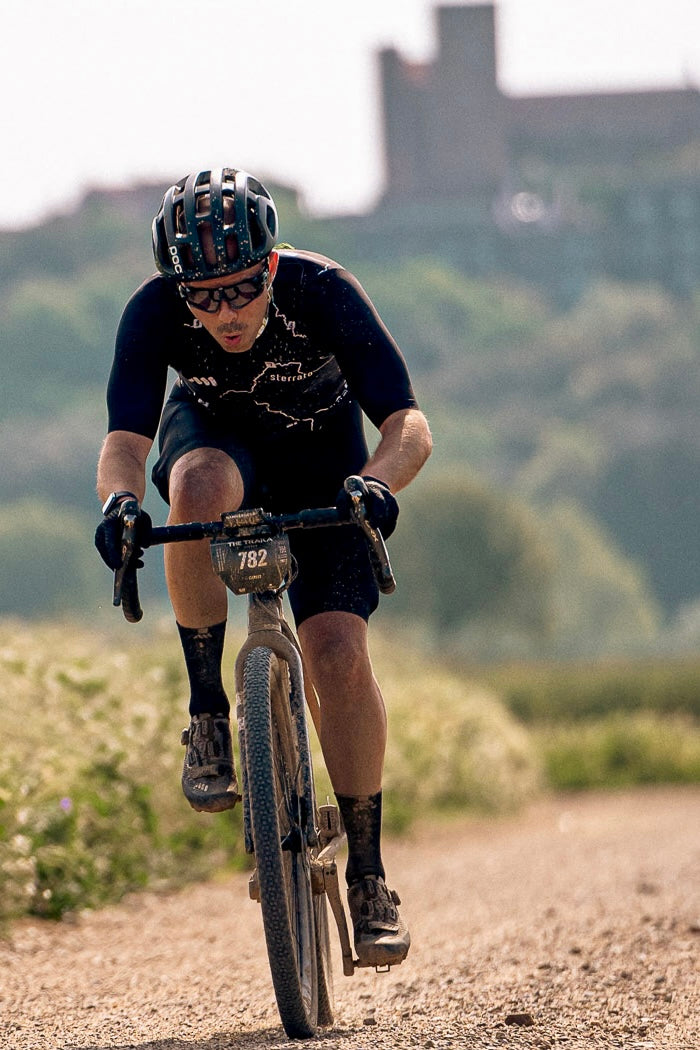Embarking on the Bikepacking Journey: An Introduction with Javier Bañon
Welcome to the first installment of our five-part series on the exciting world of bikepacking, led by renowned adventurer and bikepacking expert, Javier Bañon.

Javier, with his extensive experience and passion for cycling adventures, will guide us through the ins and outs of bikepacking, sharing his valuable insights and personal stories. Join us as we embark on this journey to explore the hidden trails and embrace the spirit of adventure on two wheels:
Bikepacking has seen significant growth in recent years, attracting cyclists, travelers, and adventurers to what appears to be a new trend, yet has been practiced for a long time. Modern bikepacking is essentially a contemporary term for an activity that has been around for over a century.
History shows us inspiring images of hardy cyclists and adventurers who, with steel bikes, ventured into the unknown. Bicycles redefined the concept of freedom worldwide, without boundaries or gender constraints.

What is Bikepacking?
Bikepacking is a blend of mountain biking, cycle touring, and lightweight camping, reflecting a high component of adventure in each journey and movement.
Traditionally, bicycle travel since the 1970s involved using panniers attached to steel or aluminum frames to carry belongings. This system is perfect for long journeys on well-trodden roads or paths but becomes cumbersome for short or even long trips where minimalism, adventure, rough trails, and a dynamic riding experience closer to riding unencumbered are preferred.
A Bit of History
Bikepacking has been in our veins for decades, centuries if we consider the nomadic experiences of many explorers who traveled on horseback in a cowboy style or practiced ‘horse packing’.

Over a hundred years ago, it wasn't called bikepacking, but one reason for buying bicycles was to explore inhospitable and unknown places, to immerse oneself in untamed nature: crossing mountain ranges like the Alps and Pyrenees in Europe or venturing into great national parks like Yellowstone (established in 1872) and Yosemite (1890).
To cover multi-day distances, bicycle travelers began to carry their luggage in leather bags and heavy cloth bundles, later tied to their frames, handlebars, and saddles. The key was to carry enough to be self-sufficient in terms of clothing and food, with minimal comfort but without being weighed down, as excess luggage would make riding those heavy machines even more challenging.
For example, the early bikes of the 'Iron Riders' (Military Bicycle Corps of Fort Missoula, Buffalo) in 1897 weighed as much as 45 kilograms (99 pounds) with bags, which is considerable by today's standards. Yet, with these late 19th-century bikes, they covered over 3,000 kilometers (about 1,864 miles), including crossing the Rocky Mountains.

The Charm and Unique Aspects of Bikepacking Adventures
The essence of bikepacking has always been present in adventure cycling. Today, cyclists and practitioners of various outdoor sports have embraced bicycles not just as a means of transport or a tool for exercise, but as a machine that allows closeness to nature, and the opportunity for more natural, wild, and authentic experiences.
Bike travel is not just about pedaling; it's about smelling the scents of the countryside, feeling the gentle breeze on your face, stopping to take a photo, finding a place to eat, refilling water, choosing the best spot to spend the night... In essence, reconnecting with the human essence on a tool that perfectly matches the speed at which every person's mind travels when they get on a bike.
We are tired of traveling by plane, watching people leave their souls at home, in airports, and on the numerous walkways that connect us to haste, to a life rhythm that only connects with stress, anxiety, and the modern diseases of the 21st century.

Bikepacking allows for a practice of simplicity in choosing equipment and enjoying the dynamic experience of moving on a bicycle to its fullest. Whether you're planning a single-night adventure close to home (S24O; more on this later), near your city, or contemplating a great journey, you have the advantage of quickly removing your bags from the bicycle and returning to the original concept of a tool-free bike except for your hands.
Having explored the foundational aspects of bikepacking, let's delve deeper into the practicalities and gear essentials in the next chapter.













